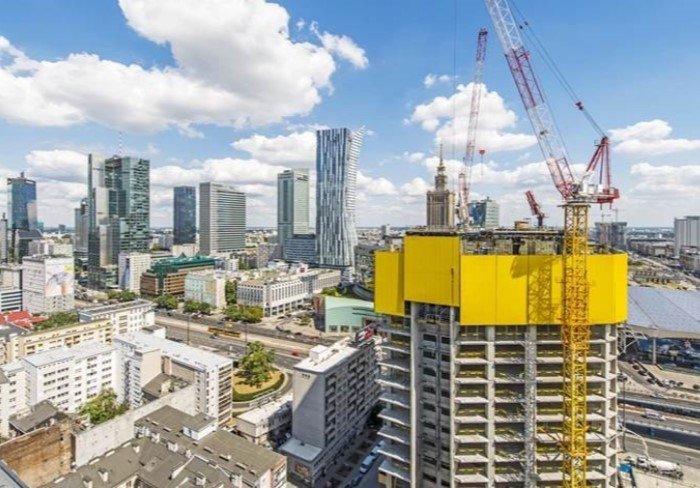Back
Already 75 metres high, with its construction now exceeding 17 floors, the soon-to-be tallest skyscraper in Europe, the Varso Tower, currently being built in Warsaw, is set to be finished next year. Upon completion the structure will stand at 310 metres and it will unseat 309.6 metre Shard in London from its top position.

The Varso Place complex, named after Varsovia, the Latin name for Warsaw, is being built next to the capital's central station. Three buildings will be constructed at the complex; 81 metres, 90 metres, and the Varso Tower.
The contractor working on the project, HB Reavis, has been careful to make the buildings work with Warsaw's skyline.
According to the contractor, lower buildings will be ready in half a year. The hotel tower Varso 1 is almost fully glazed, and interior finishing works are in progress. The façade is largely covered by the neighbouring Varso 2 office building, which will reach its final height later this month.
The Varso Tower will continue to grow at a rate of one floor per week until, as HB Reavis assures, it is completed sometime in 2020. Construction began in 2016.
The Varso Tower was designed by international architectural studio Foster + Partners. A total of 16 elevators will run between 53 floors of the building. From its roof, at a height of 230 metres, Warsaw residents and tourists will be able to admire the unique panorama of the capital, providing one of the highest observation terraces in Europe. In addition, it will be available to everyone, both during the day and at night. On the 46th and 47th floor of the building there will also be a restaurant with a view of the capital.
The smaller buildings were designed by the Polish architectural studio Hermanowicz Rewski Architekci. On the lower floors there will be more restaurants and cafes, as well as small shops and service outlets, such as a pharmacy, laundry, drugstore, florist, kiosk or post office. In addition, public arcades under the roof will serve locals throughout the year.
The project will encompass a total of 140,000 m² of usable floor space, used primarily for offices, but also making space for conference rooms, a medical facility and a gym.
The space around the complex will also change, with the planting of trees, shrubs and flower beds, as well as benches.
The complex will also utilise a variety of technologies, reducing energy and water consumption, and lowering emissions.
Resource: https://industryeurope.com
Back